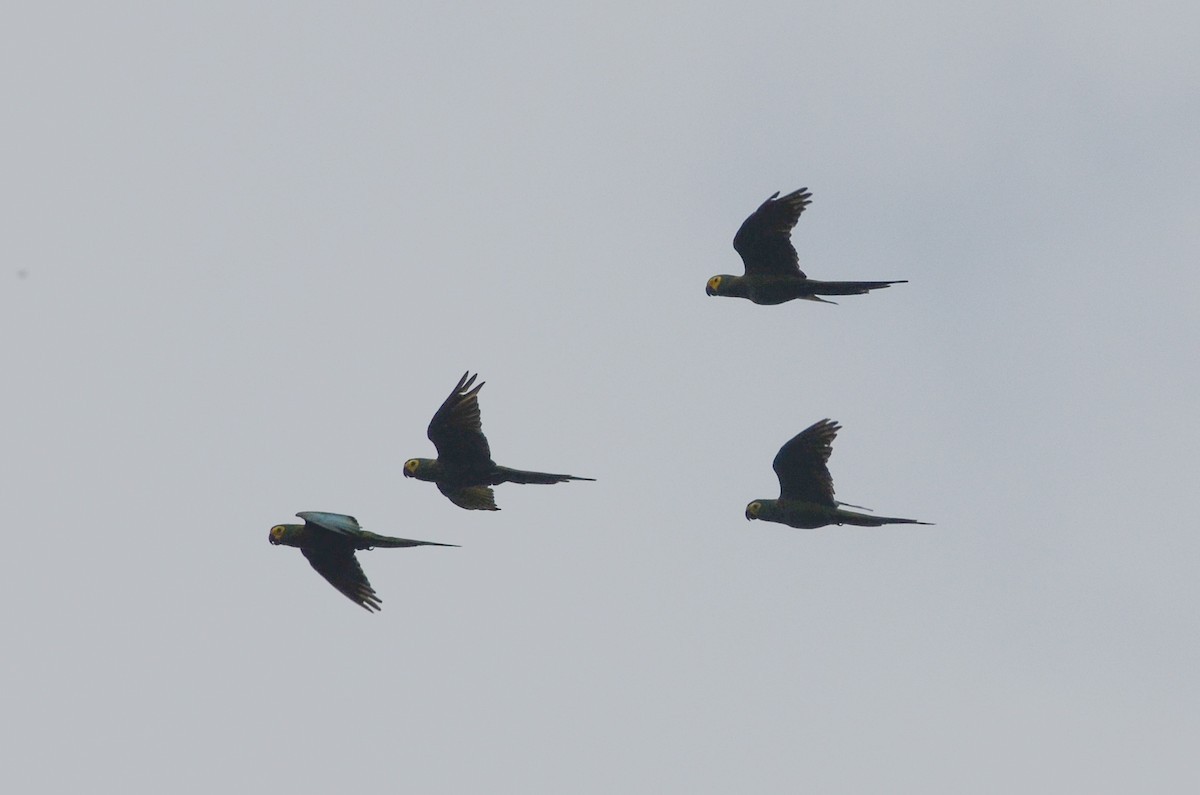Red-bellied Macaw
A species of Red-bellied Macaw Scientific name : Orthopsittaca manilatus Genus : Red-bellied Macaw
Red-bellied Macaw, A species of Red-bellied Macaw
Botanical name: Orthopsittaca manilatus
Genus: Red-bellied Macaw
Content
Description General Info
 Photo By Nikolaj Mølgaard Thomsen
Photo By Nikolaj Mølgaard Thomsen Description
The red-bellied macaw is medium-sized, about 300 g (11 oz) in weight and about 46 cm (18 in) in length including its long pointed tail. The plumage is mostly green; the cere and much of the face are covered with bare mustard-yellow skin, and the irises are dark brown. The forehead is bluish. The chin, throat and upper chest are greyish with some green scalloping, and the lower abdomen ("belly") has a large maroon patch. The tail is long and tapered. The underwings and undertail are dull olive yellow. Adults have dark-grey beaks. The legs and feet are dark grey. In common with other parrots, they have zygodactyl feet, two toes pointing forward and two backward. Males and females have identical plumage, but males are usually larger and have larger heads. Juveniles are duller in colour than adults and have a grey beak with a conspicuous white mid-line stripe running along the length of the culmen (top of the upper beak). The Spix's macaw is the only other macaw in which juveniles have a similar white culmen. 
Size
51 cm
Life Expectancy
40 years
Nest Placement
Tree
Feeding Habits
Red-bellied Macaw primarily feed on the fruits and seeds of moriche palm, showcasing a specialized diet. Their foraging behavior is adapted to these palms, often involving communal feeding that occurs at specific times of day.
Habitat
Moriche palm swamp forests, sandy savannahs with palm groves
Dite type
Frugivorous
General Info
Feeding Habits
Bird food type

Fruit
Behavior
Red-bellied macaws make reedy, high-pitched screams. They roost communally in the moriche palms, and large numbers can be seen at the roost sites at dawn and dusk; (see crepuscular). They choose large stands of these palms that have an overabundance of woodpecker holes as roosting sites. They sleep communally in these groups of hollows. Depending on the size of the hollow, between five and 10 birds sleep together. As dusk approaches, they all pile into these dormitories and sleep shoulder to shoulder. 
Distribution Area
The red-bellied macaw has an extremely large range throughout the Amazon Basin of the North Region, Brazil, except in the northwest quadrant centered on a large region of the Rio Negro flowing from Colombia-Venezuela. It ranges through the Guianas including the Guiana Highlands into eastern Venezuela, the lower Orinoco River Basin and across to the island of Trinidad. Its southern limit in Brazil is the south-central and northwestern cerrado bordering the Amazon Basin. 
Species Status
Red-bellied macaws are listed as "least concern" by the IUCN. Population numbers have not been estimated, but wild populations seem to be declining. 

 Photo By Nikolaj Mølgaard Thomsen
Photo By Nikolaj Mølgaard Thomsen Scientific Classification
Phylum
Chordates Class
Birds Order
Parrots Family
Parrots Genus
Red-bellied Macaw Species
Red-bellied Macaw